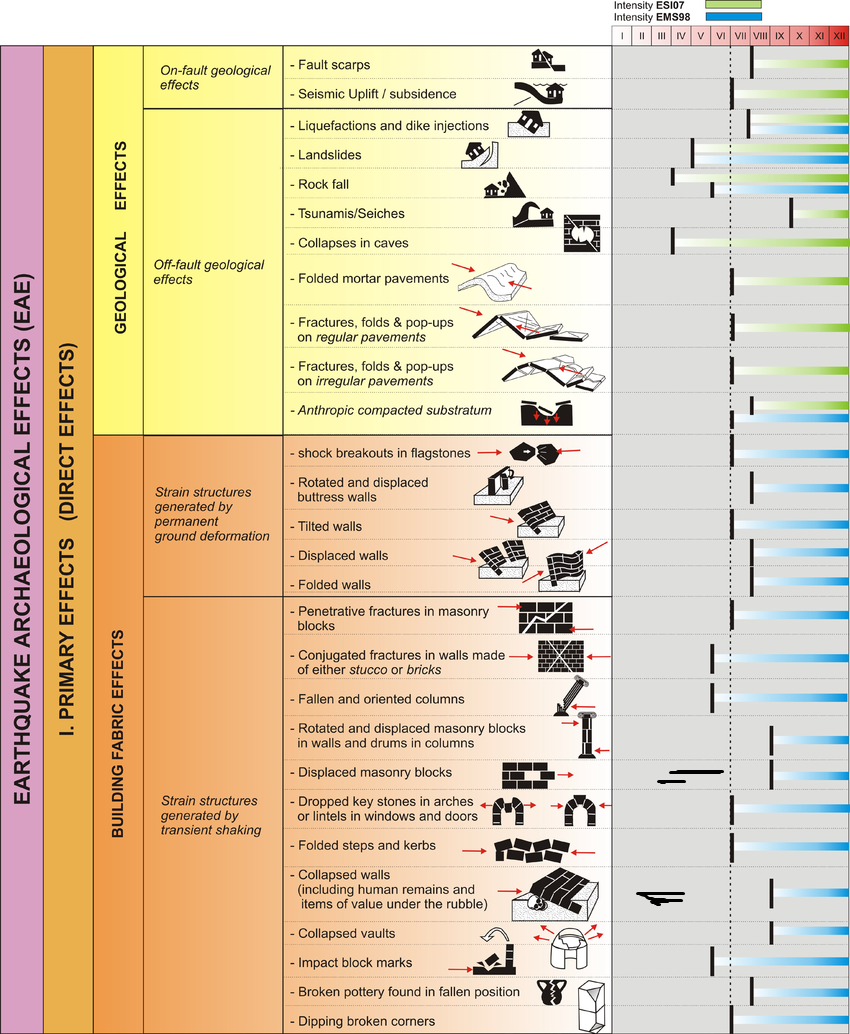Crak des Chevaliers
 Krak des Chevaliers from the southwest
Krak des Chevaliers from the southwestClick on Image for high resolution magnifiable image
wikipedia - Gianfranco Gazzetti / GAR - CC by SA 4.0
| Transliterated Name | Source | Name |
|---|---|---|
| Crak des Chevaliers | French | |
| Krak des Chevaliers | French | |
| Crac de l'Ospital | French | |
| Hisn al-Akrad | Arabic | حصن الأكراد |
| Qalʿat al-Ḥiṣn | Arabic | قلعة الحصن |
- from Wikipedia
The site [of Crak des Chevaliers ] was first inhabited in the 11th century by Kurdish troops garrisoned there by the Mirdasids. In 1142 it was given by Raymond II, Count of Tripoli, to the order of the Knights Hospitaller. It remained in their possession until it fell in 1271.
- Crak des Chevaliers in Google Earth
- Plan of Crak des Chevaliers
from Molin (2001)

 Plan of Crak des Chevaliers
Plan of Crak des Chevaliers
Molin (2001) - Fig. 6 - Artist's Reconstruction
of Crak des Chevaliers from Guidoboni et. al. (2004)

 Figure 6
Figure 6
Reconstruction of the Frankish-Crusader fortress of Crak des Chevaliers, known to the Arabic sources as Hisn al-Akrad. Situated at about 750 m above sea level the castle was in a strategic position overlooking the broad valley known as the ‘‘Gate of Homs’’. A change in the brickwork can be observed several meters from the ground (which we have highlighted with a dashed line), perhaps due to the reconstruction after the earthquake in 1170 (elaborated from Rey [1871])
Guidoboni et al (2004)
- Fig. 6 - Artist's Reconstruction
of Crak des Chevaliers from Guidoboni et. al. (2004)

 Figure 6
Figure 6
Reconstruction of the Frankish-Crusader fortress of Crak des Chevaliers, known to the Arabic sources as Hisn al-Akrad. Situated at about 750 m above sea level the castle was in a strategic position overlooking the broad valley known as the ‘‘Gate of Homs’’. A change in the brickwork can be observed several meters from the ground (which we have highlighted with a dashed line), perhaps due to the reconstruction after the earthquake in 1170 (elaborated from Rey [1871])
Guidoboni et al (2004)
| Effect | Location | Image(s) | Description |
|---|---|---|---|
| Collapsed walls | Outer Walls of Crack de Chevaliers |

 Figure 6
Figure 6 Reconstruction of the Frankish-Crusader fortress of Crak des Chevaliers, known to the Arabic sources as Hisn al-Akrad. Situated at about 750 m above sea level the castle was in a strategic position overlooking the broad valley known as the ‘‘Gate of Homs’’. A change in the brickwork can be observed several meters from the ground (which we have highlighted with a dashed line), perhaps due to the reconstruction after the earthquake in 1170 (elaborated from Rey [1871]) Guidoboni et al (2004) |
|
| Effect | Location | Image(s) | Description |
|---|---|---|---|
| Collapsed and, displaced, walls surmised from a change in brickwork several meters above the ground | Outer Walls of Crack de Chevaliers |

 Figure 6
Figure 6 Reconstruction of the Frankish-Crusader fortress of Crak des Chevaliers, known to the Arabic sources as Hisn al-Akrad. Situated at about 750 m above sea level the castle was in a strategic position overlooking the broad valley known as the ‘‘Gate of Homs’’. A change in the brickwork can be observed several meters from the ground (which we have highlighted with a dashed line), perhaps due to the reconstruction after the earthquake in 1170 (elaborated from Rey [1871]) Guidoboni et al (2004) |
|
-
Earthquake Archeological Effects chart
of Rodríguez-Pascua et al (2013: 221-224)

 Earthquake Archeological Effects (EAE)
Earthquake Archeological Effects (EAE)
Rodríguez-Pascua et al (2013: 221-224)
| Effect | Location | Image(s) | Description | Intensity |
|---|---|---|---|---|
| Collapsed walls | Outer Walls of Crack de Chevaliers |

 Figure 6
Figure 6 Reconstruction of the Frankish-Crusader fortress of Crak des Chevaliers, known to the Arabic sources as Hisn al-Akrad. Situated at about 750 m above sea level the castle was in a strategic position overlooking the broad valley known as the ‘‘Gate of Homs’’. A change in the brickwork can be observed several meters from the ground (which we have highlighted with a dashed line), perhaps due to the reconstruction after the earthquake in 1170 (elaborated from Rey [1871]) Guidoboni et al (2004) |
|
VIII+ |
-
Earthquake Archeological Effects chart
of Rodríguez-Pascua et al (2013: 221-224)

 Earthquake Archeological Effects (EAE)
Earthquake Archeological Effects (EAE)
Rodríguez-Pascua et al (2013: 221-224)
| Effect | Location | Image(s) | Description | Intensity |
|---|---|---|---|---|
| Collapsed and, displaced, walls surmised from a change in brickwork several meters above the ground | Outer Walls of Crack de Chevaliers |

 Figure 6
Figure 6 Reconstruction of the Frankish-Crusader fortress of Crak des Chevaliers, known to the Arabic sources as Hisn al-Akrad. Situated at about 750 m above sea level the castle was in a strategic position overlooking the broad valley known as the ‘‘Gate of Homs’’. A change in the brickwork can be observed several meters from the ground (which we have highlighted with a dashed line), perhaps due to the reconstruction after the earthquake in 1170 (elaborated from Rey [1871]) Guidoboni et al (2004) |
|
VII+ or VIII+ |
Guidoboni, E., et al. (2004). "The large earthquake on 29 June 1170 (Syria, Lebanon, and central southern Turkey)."
Journal of Geophysical Research: Solid Earth 109(B7).
MICHAUDEL, Benjamin (2004) Le
Crac des Chevaliers, quintessence de l’architecture militaire mamelouke,
in: Annales Islamologiques 38 (2004), pp. 45-77
Molin, K. (2001), Unknown Crusader Castles, 421 pp., Hambledon and
London, New York.
Rey, E.G. (1871), Etude sur les Monuments de l’Architecture Militaire des
Croise´s en Syrie et dans l’ıˆle de Chypre, Imprimerie Natl., Paris. - online open access at archive.org
Rey, E.G. (1871), Etude sur les Monuments de l’Architecture Militaire des
Croise´s en Syrie et dans l’ıˆle de Chypre, Imprimerie Natl., Paris. - online open access at BnF Gallica
